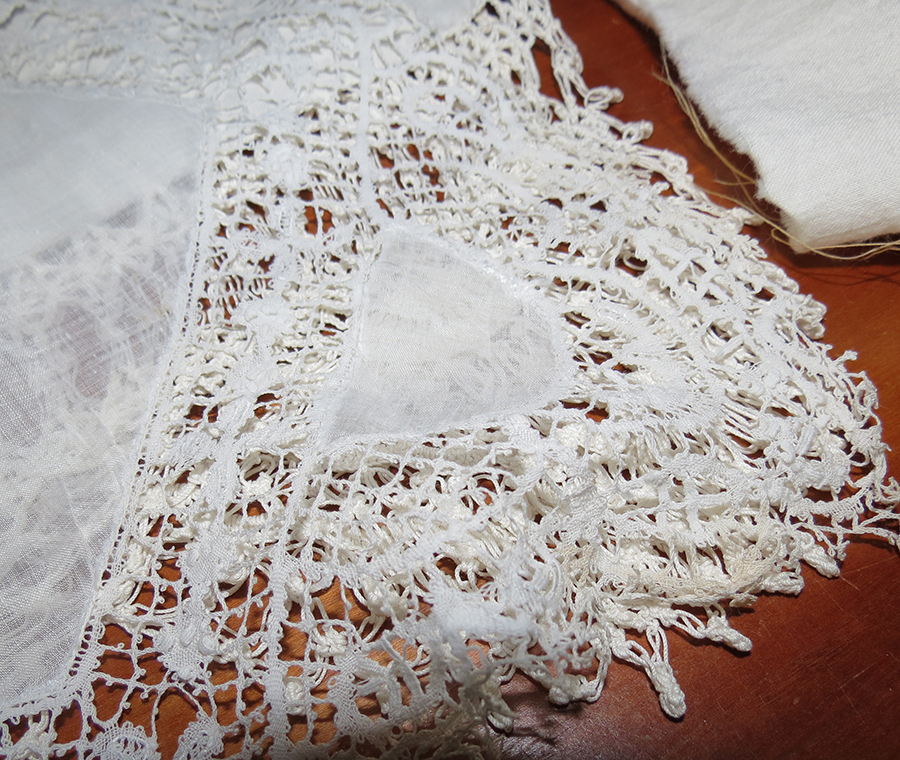Six Suggestions for Cleaning Vintage Linens
 Antique linens are works of art, and should be treasured as labors of love from many generations back. Yet, they are also most usable today. To supplement the show, I have compiled some ideas for cleaning vintage linens that may be helpful as you enjoy treasures from past generations.
Antique linens are works of art, and should be treasured as labors of love from many generations back. Yet, they are also most usable today. To supplement the show, I have compiled some ideas for cleaning vintage linens that may be helpful as you enjoy treasures from past generations.
Each stain on a piece of vintage linen could have a life of its own. Therefore, what works for one person and their stain, may not work for someone else. So, the rule of thumb is that there is no guarantee on any given solution. But these suggestions may lead you in the right directions.
- Soak linens in warm water for several hours to loosen the particles that have built up over the years.
- After changing the water and gently rinsing the linens, allow the linens to soak in warm water with mild, nonabrasive, phosphate-free soap. Avoid using bleach because it can damage the fibers. Rinse textiles at least twice in clear water to remove all soap residue. Place a rinsed item on a clean, dry white towel and press to remove some of the water.
- Old stains may be impossible to remove. After decades, old stains may be set by repeated washing and drying. Try soaking the fabric in an enzyme textile cleaner diluted with water before laundering. Or add a non-chlorine bleach to the wash water. Non-chlorine Bleach” is a laundry product containing per-oxygen compounds, which release active oxygen in wash water. This type product produces gentler bleaching action. Some examples of leading products on the market are Biz, OXO Brite, Clorox 2, Green Works, Borax and Seventh Generation. There are also a number of Generics that are simply named Non-Chlorine Bleach.
- On very delicate pieces, you will need take an old fashion, yet gentler, less invasive procedure. Salt and lemon juice and the sun have been used for decades. Put a mixture of salt and lemon juice on the stain and then pour boiling hot water over the stain while holding the garment or linen over the sink. If at all possible, dry antique items by laying them flat on a white towel or sheet outside in the sun. Air-drying is always preferable to using a clothes dryer, but if you must dry the item inside, use the lowest possible setting.
- Our Grandmothers method of washing white linens and laying them outside directly on green grass to dry, was not off base. The chlorophyll in the green grass will act as a natural bleach on the white linens leaving them whiter and brighter.
- Many people utilize the following recipe for removing stains. The four ingredients are:
1 scoop Biz, 1 scoop OxyClean, 3/4 cup Ammonia, and 1 gallon hot water. Try it and see if it works for your stained linens
- Last, I want to refer you to a great website from Clorox. The site provides guidelines and suggestions on removing forth-four different stains. Fabric Stain Removal from Clorox.com
I hope these ideas help assist you in using and enjoying vintage linens for years to come.
© Dr. Ken Rivenbark 2015